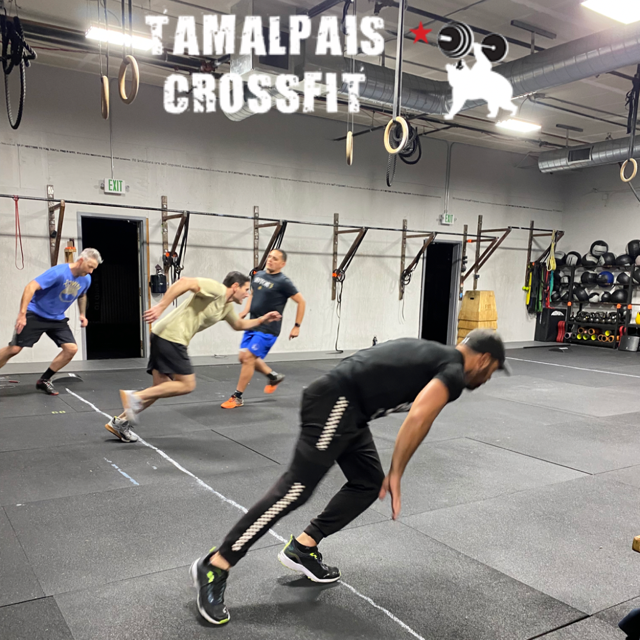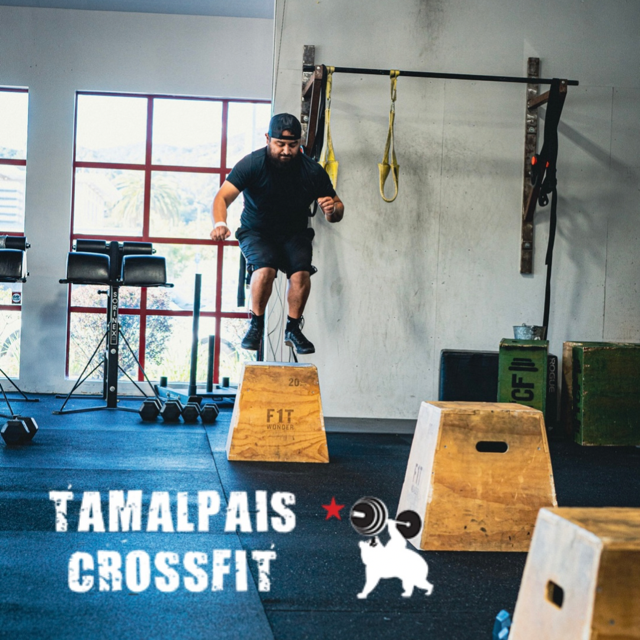I found this article from the Denver Post online, more great incentive to keep up the Paleo!!
Their secret: Work out hard, and eat like a cave man
Fat. Sedentary. In love with fried cheese.
That’s how Blakely Graham, 36, described herself before she started an intense exercise regimen and tapped her inner cave woman.
Now, she’s trim and athletic. She still bats her eyes at deep-fried dairy, but finds the strength to reject the stuff.
In September, Graham, a Boulder marketing executive, joined a gym called CrossFit Roots, one of more than 1,700 CrossFit gyms around the world. The program emphasizes intense, simple workouts in bare-bones gyms, where people perform squats, throw heavy balls against walls, perform countless pull-ups and push-ups, and nearly (or do) collapse by the end of the workouts. The workouts first were popular with police academies, military units, martial artists and firefighters but have spread to fitness enthusiasts in general.
Shortly after joining the gym, Graham, like a lot of CrossFitters, also began eating “paleo” (short for paleolithic), an approach to diet that in some regards mirrors CrossFit’s minimalist, no-nonsense training ethic: the diet eliminates dairy products, legumes, all grains, refined sugar and most salt. It is a diet, in other words, similar to what people ate during the Stone Age.
The paleo-CrossFit combo- platter has transformed Blakely’s life. Her husband, who followed her into CrossFit and the diet, is a changed man, too.
“I didn’t even know he was good-looking,” said Graham, with a wink, just before starting a session recently in CrossFit Roots’ tiny Boulder gym — really, more like a big garage — just off Pearl Street. “By week three, the weight was coming off so quickly, and I was getting so many compliments, I said, ‘OK. I’ll stick with this.’ ”
The book on paleo eats
CrossFit’s embrace of the paleo way, also called the “cave man” diet, also has thrilled Colorado State University professor Loren Cordain, though he isn’t swinging a club in celebration or grunting for joy. At least not yet.
But the scholar, who teaches in the university’s health and exercise science department, wrote the book “The Paleo Diet” in 2002, based on decades of research into the diets, and the health, of people who get their food from hunting and gathering. Among other things, Cordain found people who eat diets rich in meat, vegetables, fruits, nuts and seeds suffer fewer diseases and health problems than Western contemporaries.
The book didn’t do gangbusters in the marketplace. Cordain continued publishing articles and teaching. And then, nearly a decade later, the book started selling. Its ranking on Amazon.com began creeping up. Now, Cordain is a celebrity among CrossFitters. It all surprises Cordain, a tall, ruddy guy who has dedicated his life to scholarship.
The CrossFitters “have banded together, and the de-facto diet they have chosen is the paleo diet,” he said. “You can’t kick a gift horse in the mouth.”
Like most people involved with CrossFit, Nicole Gibson, one of the owners of CrossFit Roots, heard about the paleo diet at roughly the same time she discovered CrossFit. Now she runs the Boulder gym fulltime (she used to work as a city planner) and she eats paleo.
“In Boulder there is so much gimmicky health food,” she said. “We just wanted a way to give people a clear understanding of what real food was, and we thought this was the best way to get people thinking about food.”
CrossFit gyms across the country promote the paleo diet. A Google search on paleo and CrossFit reveals nearly 100,000 references: lectures about the training and the diet; people on CrossFit message boards trading tips; recipes for beef jerky. You might encounter the website for CrossFit Roots, which contains a chronicle of the gym’s “paleo showdowns,” challenges to gym rats to maintain a paleo diet for 60 days.
The CrossFitters lose weight and gain muscle and swear they feel better all around, thanks in part to the diet. Cordain has been eating paleo for nearly 30 years, but he’s not in it for sculpted biceps or abs. He just thinks it’s one important route to longterm health.
Posters about native people and the development of early humans cover the walls of his CSU office. Books and papers fill the rest of the space, including a 6-inch-high stack of papers on his desk having to do with autoimmune disease and diet.
Few contemporary people ate paleo until CrossFitters began championing the diet, but now thousands are rejecting French bread and tofu (soybeans) and cheddar.
Among those CrossFitters who follow paleo diets are people with autoimmune diseases like diabetes. Some have seen dramatic improvement in their condition. At least two people, in fact, reportedly had their Type 1 diabetes simply vanish.
The diet has persuaded Scot Lewey, a gastroenterologist in Colorado Springs, to prescribe it to some patients suffering from autoimmune conditions.
“I think there are some links between what we are seeing in terms of weight gain and inflammatory, autoimmune diseases,” he said. “Those who can do (the diet) see significant health benefits in terms of weight loss, improved skin, less fatigue.”
The diet, though, is difficult. For many patients, the bulk of their meals consists of grains (like pizza dough or crackers), cheese, fatty meats and sugar. Unless they suffer from severe conditions, and are desperate and willing to try just about anything, sticking to paleo can be a stretch.
While following the paleo diet tests Lewey’s patients, understanding it is a breeze. Eat all of the vegetables and fruits you want. In addition, eat lean meats, nuts and seeds. That’s it.
“If nothing else, it gives them a framework,” Lewey said.
One way to look at the diet? Upon entering a grocery store, head for the edges of the store, to the produce and fruit section, to the meat and fish counters, to the eggs. Skip all of the aisles in the middle. The supermarket fringes, Cordain said, hold the food that even a Neanderthal might recognize.
Paleo is “the norm”
“This skull never drank milk, this skull never had a slice of bread in its life,” said Cordain, holding a replica of a paleolithic skull in a CSU anthropology classroom. “That is the norm for humanity. Average Americans haven’t gone through a single day of their lives without eating sugar or flour or dairy. What is the basis for the human diet? What we did is uncover what was pre-existing. This is the universal human diet.”
Naturally, not every faction of the nutrition community signs off on eating the paleo way. For starters, there is the Department of Agriculture’s food pyramid, which urges Americans to eat grains, legumes and dairy. Some nutritionists criticize low-carb diets, and lump paleo into the growing pile of diets that emphasize meat over bread. Such diets, they say, are bad for the heart, and pushing pulled pork and cheddar over carrots and oatmeal invites a host of medical problems.
Cordain, though, says the paleo diet does not have to be low-carb. People are encouraged to eat as much fruit and vegetables as they want. And while other low-carb diets, like the Atkins diet, celebrate bacon and other fatty meats, as well as dairy products, the paleo diet promotes only lean meats (and dairy is a no-no).
“It all points to the notion that the diet humans are adapted to is real food,” said Cordain. “Living food.”
Tips for eating “Stone Age”
Some fitness enthusiasts have embraced Loren Cordain’s book, “The Paleo Diet.” They have become contemporary hunter/gatherers, at least in terms of what they eat.
The diet has seven rules, according to Cordain.
• Eat a relatively high amount of animal protein compared with that in the typical American diet.
• Eat fewer carbohydrates than most modern diets recommend, but eat lots of good carbohydrates — from fruits and vegetables.
• Eat a large amount of fiber from nonstarchy fruits and vegetables.
• Eat a moderate amount of fat, with more good (monounsaturated and polyunsaturated) fats than bad (saturated) fats, and nearly equal amounts of omega 3 and omega 6 fats.
• Eat foods with high potassium content and low sodium content.
• Eat a diet with a net alkaline load (plenty of fruits and vegetables)
• Eat foods rich in plant phytochemicals, vitamins, minerals and antioxidants
Read more: http://www.denverpost.com/search/ci_14719513#ixzz0kT47YJfr




